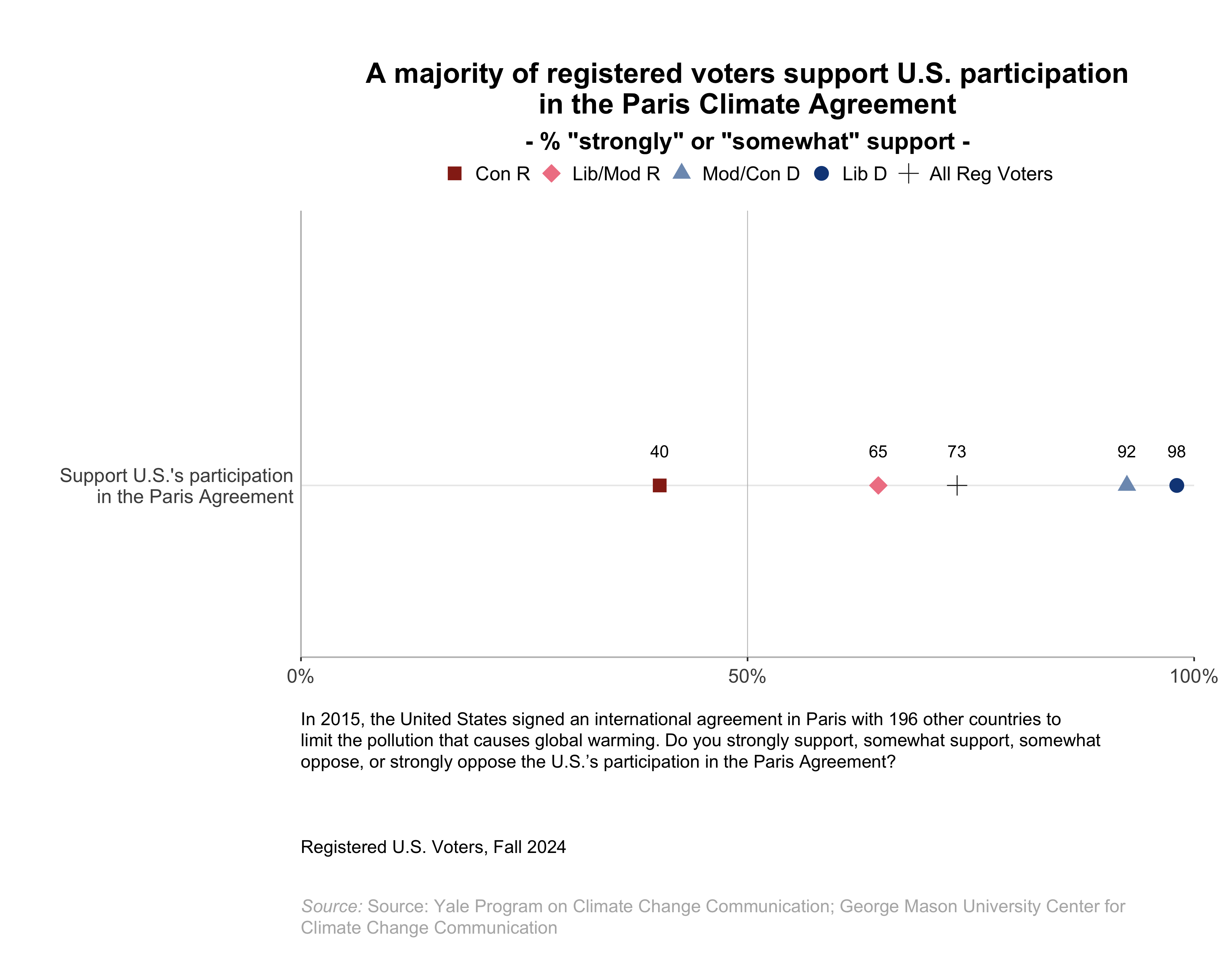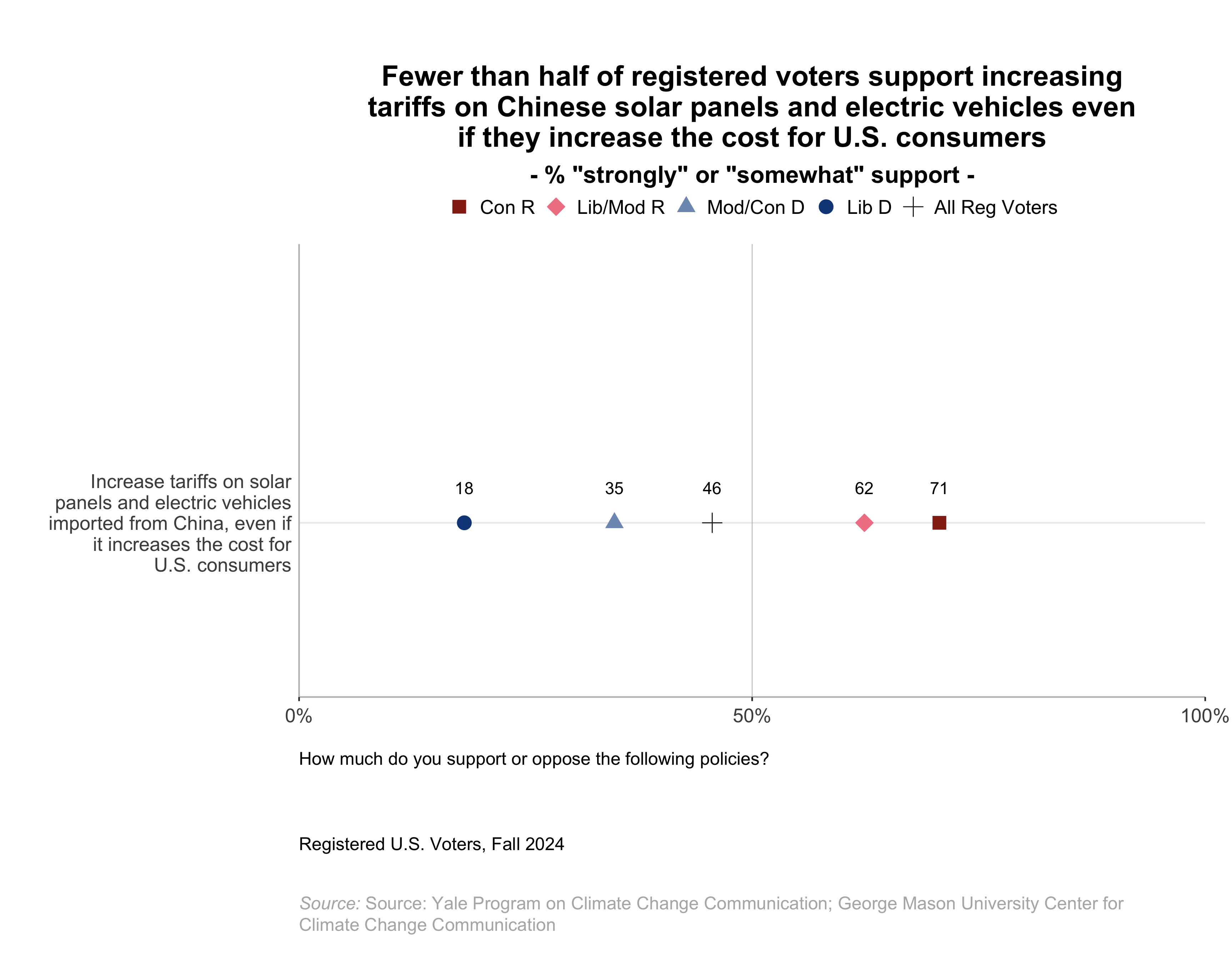Report · Jan 30, 2025
Climate Change in the American Mind: Politics & Policy, Fall 2024
By Anthony Leiserowitz, Edward Maibach, Seth Rosenthal, John Kotcher, Emily Goddard, Jennifer Carman, Teresa Myers, Marija Verner, Jennifer Marlon, Matthew Goldberg, Joshua Ettinger, Julia Fine and Kathryn Thier
Filed under: Policy & Politics
4. International Climate Action
4.1 A majority of registered voters support U.S. participation in the Paris Climate Agreement.
In December 2015, officials from 196 countries (nearly every country in the world) met in Paris at the United Nations Climate Change Conference and negotiated a global agreement to limit global warming. On Earth Day, April 2016, the United States and 174 other countries signed the agreement, with all of the other countries soon following suit. However, during President Trump’s first term, the United States withdrew from the agreement. The United States then rejoined the agreement soon after President Biden’s inauguration in 2021. On the day of his second inauguration, January 20, 2025, President Trump signed an executive order to begin withdrawing the United States from the agreement again.
A large majority of registered voters (73%) support U.S. participation in the Paris Climate Agreement, but support varies by party. Nearly all liberal Democrats (98%) and moderate/conservative Democrats (92%) and about two-thirds of liberal/moderate Republicans (65%) support U.S. participation, as do four in ten conservative Republicans (40%).
4.2 A majority of registered voters support providing aid to developing countries for climate change mitigation and adaptation.
Majorities of registered voters support providing financial aid and technical support to developing countries to limit their greenhouse gas emissions (i.e., mitigation, 61%) and to help them prepare for the impacts of global warming (i.e., adaptation, 58%).
Large majorities of liberal Democrats support providing aid for mitigation (91%) and adaptation (92%), as do large majorities of moderate/conservative Democrats (mitigation, 78%; adaptation, 80%). Fewer liberal/moderate Republicans (mitigation, 48%; adaptation, 41%) and conservative Republicans (mitigation, 28%; adaptation, 22%) support these policies.
4.3 Fewer than half of registered voters support increasing tariffs on Chinese solar panels and electric vehicles even if they increase the cost for U.S. consumers.
Fewer than half of registered voters (46%) support increasing tariffs on solar panels and electric vehicles imported from China, even if it increases the cost for U.S. consumers. Majorities of conservative Republicans (71%) and liberal/moderate Republicans (62%) support increasing these tariffs while fewer moderate/conservative Democrats (35%) and liberal Democrats (18%) support doing so.


